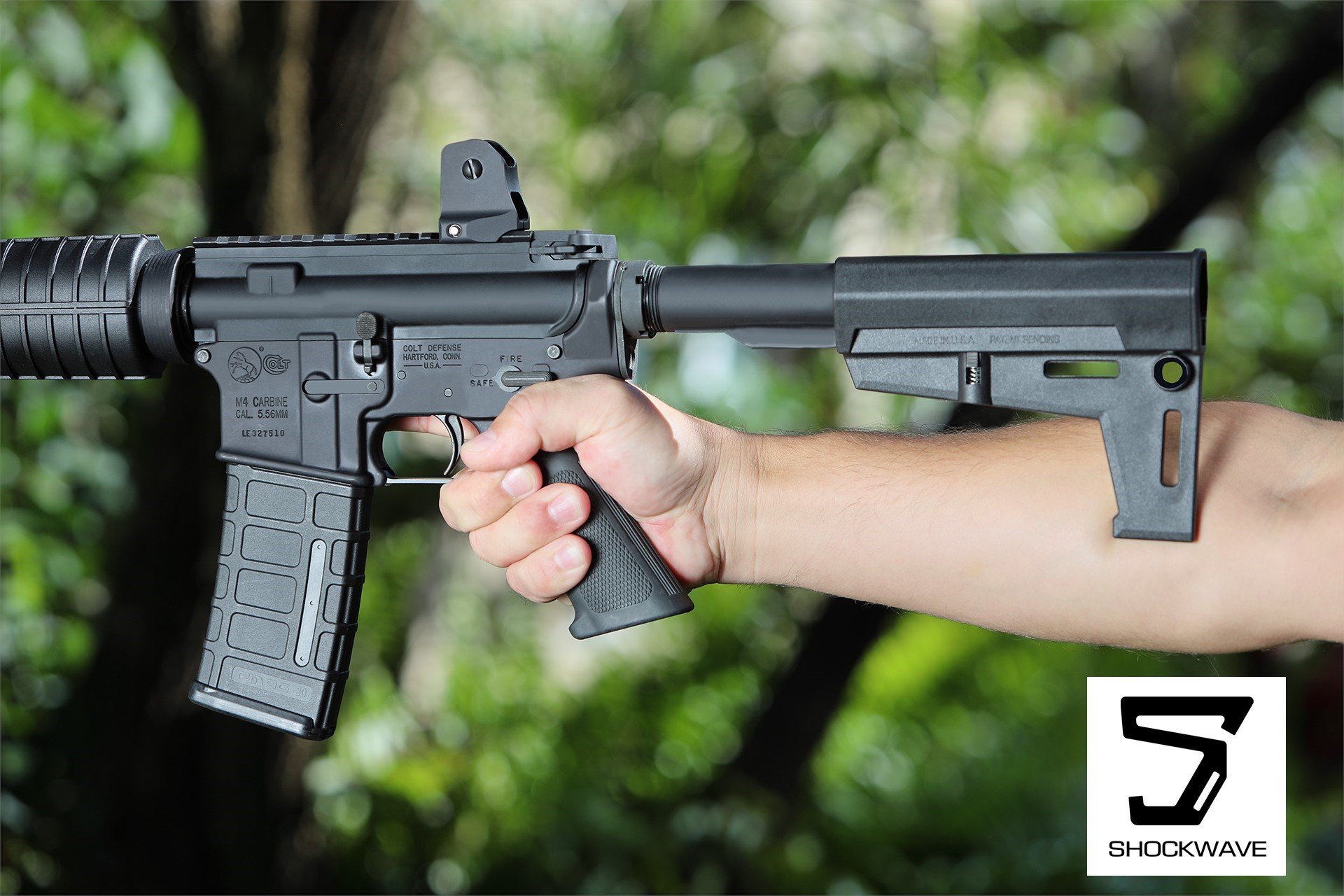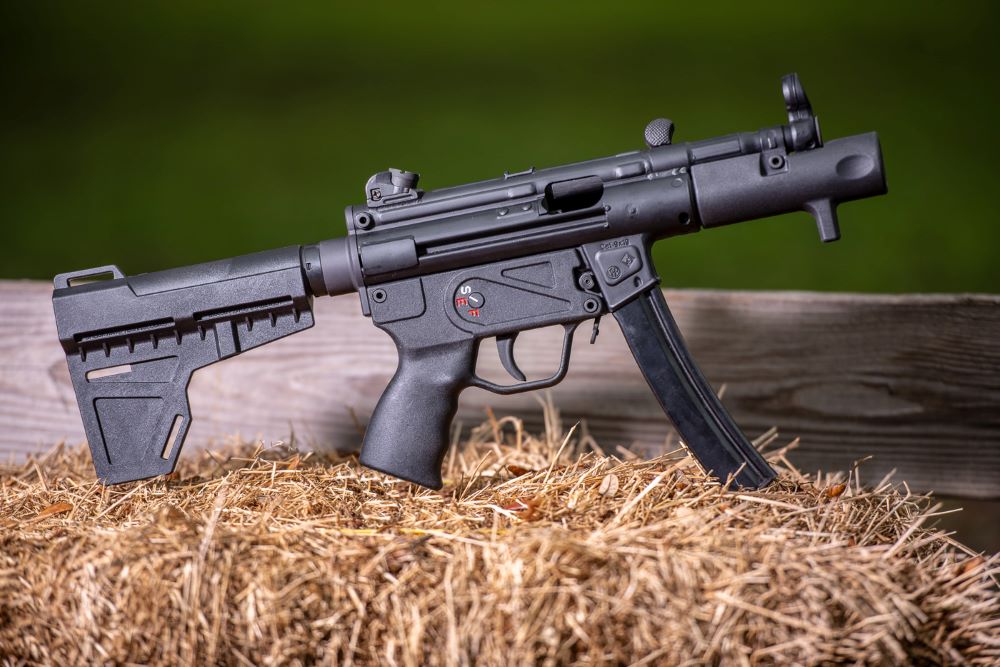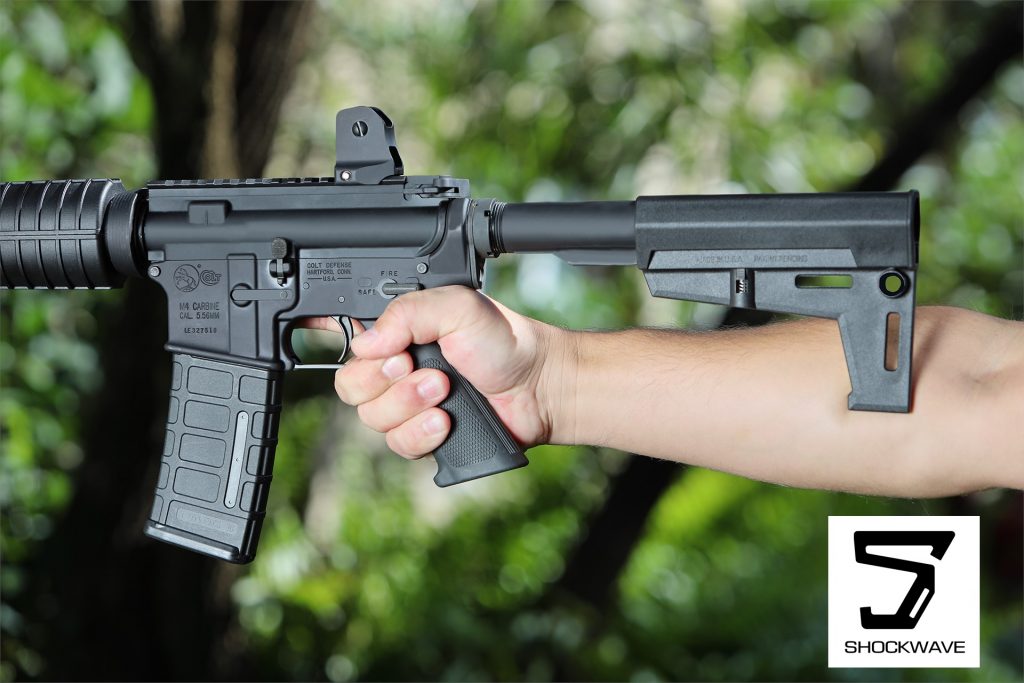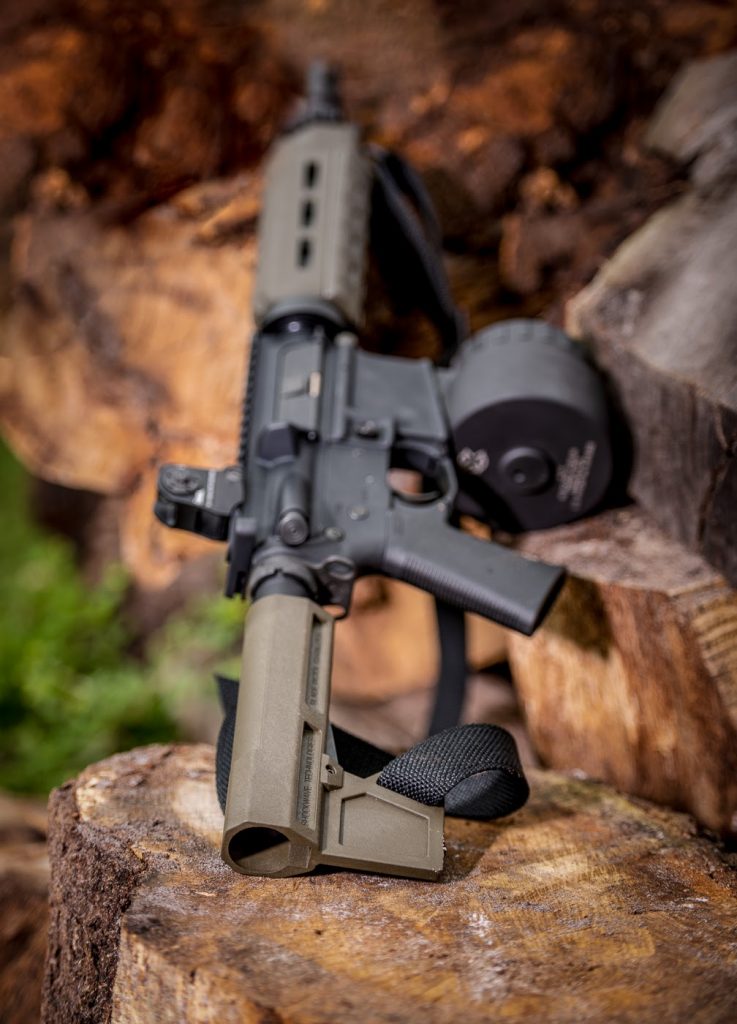Let’s cut to the chase: The AR-15 pistol is one of the best firearms for home defense.
Why? They’re affordable, reliable, accurate, and found everywhere. It’s no wonder the AR-15 is informally known as America’s 21st Century musket. And for good reason.
When an intruder sees the easily recognized AR in your hands, they know you mean business.
Learn about the evolution of the AR and AR pistol.
But first, let’s dive into the benefits of using an AR-15 pistol for home defense. Each benefit is like a ripple effect — they all go hand in hand to make this firearm perfect for defense purposes.
Benefits of an AR-15 Pistol for Home Defense

Affordable
You can find an AR-15 pistol to fit every budget: from just a few hundred dollars to the “sky is the limit.” The typical .223 ammunition is easily found in stores (when there’s not a global pandemic unfolding daily or nightly riots) and one of the least expensive ammos, with prices averaging about 32 cents per round.
Low Recoiling
A low recoil makes the AR-15 pistol easy to shoot and a good option for beginners — even younger members of the family.
Accuracy
Because of such low recoil, accuracy is improved for most shooters.
Lightweight
At a mere 6 pounds — with ammo! — the AR-15 pistol is light enough for shooters of all ages and experiences. Because it has such a lightweight body, you can easily customize and add accessories to your firearm without making it too heavy to handle safely and accurately — especially in a home defense scenario.
Ergonomically Designed
Many features of the AR-15 pistol are designed with ergonomics in mind, making this firearm comfortable and safe to shoot: pistol grip, trigger reach, safety location, forward handguard, sights, etc.
Ammo Capacity
A typical AR-15 pistol magazine holds 30 rounds of ammo.
Many experts recommend using the .223 cartridge because it’s typically easy to find in stores, inexpensive, and provides lower recoil. Some recommend using a 55-grain soft-point load that minimizes bullet penetration, which can be beneficial to protect your family in other parts of the home (or surrounding neighbors) in case the bullet misses the intended target. However, as you may know, the AR-15 is available in a multitude of calibers.
Size
During a home invasion, you don’t want to be turning corners and allow the intruder to discover your location before you know theirs. The AR-15 pistol is a great option for home defense due to its relatively short length, allowing you to turn corners discreetly and avoid disclosing your location that can put your defense game at risk.
Customizable
From function to ergonomics to aesthetics, there are simply too many types of firearm accessories for customizing your AR-15 pistol than we can possibly cover here: grips, forearms, slings, sights, lights, lasers, scopes, red dot sights, triggers, muzzle devices, and so on.
For home defense purposes, however, we recommend keeping it simple. Focus on the following accessories:
- Brace, grip and/or sling: for better and safer control of your firearm
- Flashlight: for better visibility in low-light conditions and stunning any intruders with the bright illumination
- Red dot sight: for accuracy
A note about pistol braces:
Whether you’re building a custom AR-15 pistol or bought an AR-15 pistol without a brace, adding a brace can improve control and accuracy.
An AR-15 pistol cannot have a stock but it can have a brace, such as the Shockwave Blade and Shockwave Blade 2M.
Shockwave AR-15 Pistol Accessories
Shockwave Technologies offers products to enhance your home defense use (and enjoyment) of your AR-15 firearms. Check out these Shockwave products compatible with AR-15 pistols.
Blade®
Made from high-strength glass-reinforced polymer, the Blade® is manufactured to exacting tolerances and fits all pistols equipped with a standard AR-15 pistol buffer tube (up to 1.25? in diameter). Just slip it on and tighten the large set screw for a rock-solid installation.
Blade® fits all pistols equipped with a standard AR-15 pistol buffer tube (up to 1.25? in diameter) AR pattern, Glock, CZ Scorpion Evo 3, HK9X pattern, etc.
Features include:
- Available in black, flat dark earth, OD green, and stealth gray
- Quick and easy to install.
- Provides additional support during firing.
- Weighs a scant 5.0 ounces.
- ATF approved for pistol use
Blade® 2M
Made from high-strength glass-reinforced polymer, the adjustable Blade® 2M pistol stabilizer is manufactured to exacting tolerances and fits all pistols equipped with a Mil-spec buffer tube. Just slip it on and lock in place. Adjusts with a simple finger lever.
Compatible with all pistols equipped with a Mil-spec buffer tube:
- AR-15 pattern
- MPX
- Glock
- CZ Scorpion Evo 3
- HK9X pattern
- etc.
Features include:
- Available in black, flat dark earth, OD green, and stealth gray
- Quick and easy to install.
- Provides additional support during firing.
- Weighs a scant 4.0 ounces.
- ATF approved for pistol use







Recent Comments